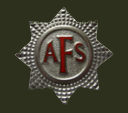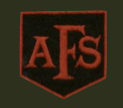The AFS
 The AFS
The AFS
A (very) Brief History
The Auxiliary Fire Service (AFS) was first formed in 1938 as part of the Civil Defence preparation for the expected war with Germany in 1939. Its role was to supplement the work of local fire brigades. In 1941 the AFS and local fire brigades were amalgamated into the National Fire Service. During the conflict, and especially during the blitz, the volunteer members of the AFS/NFS served their country with distinction, prompting Winston Churchill to describe them as “Heroes with Dirty Faces”.
Post War
Following the end of the war the Auxiliary Fire Service was reactivated in 1948 as part of Britain’s Civil Defence program and members of the AFS were required to carry out Civil Defence training as well as fire fighting training. Initially the AFS were equipped with the war time vehicles but 1953 saw the arrival of new vehicles, all painted deep bronze green, including the now familiar ‘Green Goddess’ fire engine and of course motorcycles from BSA and Matchless.
With lessons learnt during the war, the need to move large numbers of AFS vehicles around the country to combat fires resulting from bombing raids was deemed to be essential and the Civil Defence “Mobile Column Depot’ was established in Surrey. 150 members of the military were drafted in to train members of the AFS and Civil Defence in the formation of mobile columns. Following training and development a Region was able to establish, on mobilisation, a number of Mobile Fire Columns, each consisting of approximately 144 vehicles. These Columns, when fully operational, could stretch for eight miles on the open road. It was for this reason that motorcycles were needed. The AFS Despatch Riders would shepherd the columns, controlling junctions, giving directions and relaying messages. At it’s peak the Home Office could mobilise forty fully equipped Mobile Fire Columns.
In 1968 the decision was made to scale down the Civil Defence force and to again disband the AFS. Its vehicles were brought in from all over the UK to be stock-piled in various Home Office supply stores. Those vehicles deemed not to be needed in any future plans were very quickly auctioned off, these included the fleets of motorcycles. By the end of 1970 most were sold and found their way in the hands of private individuals. In Scotland the last motorcycles were sold off in 1977.
The ex-AFS Green Goddess fire engines did get see action once again during the various firemen’s strikes but now most, if not all have either been sold off or exported overseas to developing countries.
